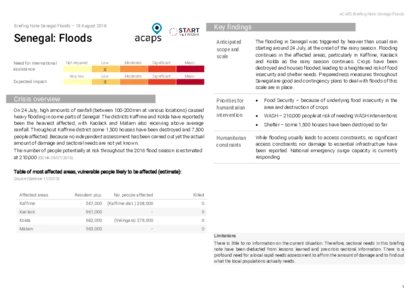Latest updates on country situation
21 October 2025
Since the outbreak declaration on 21 September 2025, Rift Valley fever has spread across Senegal, with 258 confirmed cases and 21 deaths reported by 21 October. Six of Senegal’s 14 regions are affected, mostly in Saint‑Louis in the north. The outbreak follows weeks of rain and flooding that created stagnant water ideal for mosquito breeding. Transmission occurs mainly through mosquito bites and contact with infected livestock, putting farmers and pastoralists at high risk. Authorities have launched public awareness campaigns, livestock vaccination, and joint response operations involving the health and agriculture sectors. Livestock losses are threatening household food security and income, while concurrent mpox cases further strain limited health systems. Although the rainy season is gradually ending (June–October), residual water pools and livestock movements could sustain localised transmission, highlighting the need for continued disease surveillance, public information, and vector control measures. (Le Monde 15/10/2025, Le Quotidien 21/10/2025, RFI 21/10/2025)
current crises
in
Senegal
These crises have been identified through the INFORM Severity Index, a tool for measuring and comparing the severity of humanitarian crises globally.
SEN002 - Climatic shocks and economic vulnerability
Last updated 30/11/2025
Drivers
Floods
Drought/drier conditions
Political/economic crisis
Crisis level
Country
Severity level
3 Medium
Access constraints
1.0
Analysis products
on
Senegal
18 August 2016
Senegal: floods
DOCUMENT / PDF / 546 KB
On 24 July, high amounts of rainfall caused heavy flooding in some parts of Senegal. The districts Kaffrine and Kolda have reportedly been the heaviest affected, with Kaolack and Matam also receiving above average rainfall. Throughout Kaffrine district some 1,500 houses have been destroyed and 7,500 people affected.


